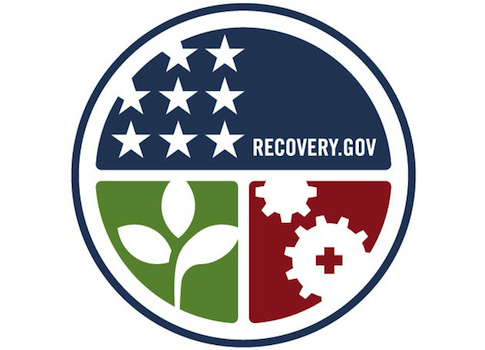The website launched to track spending tied to the stimulus bill is riddled with incomplete data and excludes companies that have become politically inconvenient for the Obama Administration.
Recovery.gov was launched in 2009 to track the roughly $800 billion allocated for the American Recovery and Reinvestment Act. The site was the "centerpiece of the administration's oversight plan," according to Michael Grabell, author of Money Well Spent? The Truth Behind the Trillion-Dollar Stimulus, the Biggest Economic Recovery Plan in History.
"Instead of politicians doling out money beyond a veil of secrecy, decisions about where we invest will be made transparently," Obama declared when he announced the program. "Every American will be able to hold Washington accountable for these decisions by going online to see how and where their taxpayer dollars are spent."
"All of this is very transparent," Transportation Secretary Ray LaHood said in a town hall meeting in St. Cloud, Minn., in 2009. "Any of you as taxpayers could go on Recovery.gov right now, any time, today, tonight, 24/7, and find out where the money’s being spent."
In practice, though, some of the administration’s biggest Recovery Act projects are hard to find, or list smaller dollar amounts than originally announced.
One notable absence from Recovery.gov is Fisker Automotive, a project the Energy Department listed as one of its "Recovery Act success stories" in a memo on its Delaware stimulus efforts. Fisker was approved for a $529 million conditional loan guarantee to re-open a GM plant in Delaware and begin producing its electric car, the Karma.
Vice President Joe Biden said, "Thanks to the Department of Energy loans and Recovery Act grants for vehicle electrification and an innovative company called Fisker Automotive, the plant was reopened in order to start producing the next generation of plug‐in hybrid vehicles in America that get 100 miles to the gallon."
After it became a political liability for the administration, however, the company and the government were quick to disavow any connection between Fisker and the stimulus.
A visitor to the website will be unable to find Fisker on Recovery.gov since it was not technically part of the stimulus: The $529 million loan was disbursed through the Energy Department’s Advanced Technology Vehicle Manufacturing (ATVM) program. The ATVM program only received $10 million in stimulus funds for administrative costs.
Other Energy Department loans on Recovery.gov appear lower than the announced amount or are divvied up among several firms.
The $1.6 billion loan guarantee for BrightSource Energy was a Recovery Act-funded project, according to a Department of Energy press release. Yet Recovery.gov only shows $267 million in loans to BrightSource, and $180 million to NRG Energy, BrightSource’s partner in the Ivanpah Project.
The Energy Department awarded a $737 million loan guarantee to Tonopah Solar Energy, but its Recovery.gov filing lists its award as $692 million.
Additionally, Abound Solar received a $400 million loan guarantee from the Department of Energy, but is only listed as receiving $369 million on Recovery.org.
The Energy Department awarded Abengoa Bioenergy Biomass of Kansas $132 million, but its Recovery.gov profile lists an award of $127 million.
What accounts for the discrepancy? "What we report is what the recipients report to us," Recovery Accountability and Transparency (RAT) Board spokesman Edward Pound told the Free Beacon.
The difference is not through any error on the part of RAT, which oversees stimulus funds and monitors for fraud. The discrepancies appear to derive from the fact that loan recipients only reported the principal amount of their loan, and excluded capitalized interest.
Since the beginning of its efforts, the Recovery Board struggled with the enormity of its task: tracking $800 billion taxpayer sent to thousands of government agencies, companies, and nonprofits around the country, and presenting the data in a way that is easy to understand.
The site is missing a large quantity of data, according to a 2011 report by AOL. Of 98 data elements— "such as funding agency name, fiscal year, recipient name, recipient zip code"—only eight were complete on all 517,589 recovery.org filings, AOL reported.
When the RAT Board released its first reports from recipients of stimulus money at the end of October 2009, the problems with self-reporting quickly became apparent.
As Grabell wrote:
Almost immediately though, reporters and auditors spotted errors. A flu vaccine manufacturer reported receiving a contract for $1.4 billion when it was really $10.4 million. A Colorado call center hired to help with the digital television conversion listed 4,200 jobs. But most of those jobs lasted five weeks or less. The number should have been 635. The California auditor rapped the state corrections department for reporting 18,000 jobs rather than the 5,000 officers who had received layoff notices before the stimulus came in. A shoe-store owner in Kentucky reported saving 9 jobs with just $900 when he actually supplied the Army Corps of engineers with nine pairs of boots. Some contractors counted part-time work as full time. Head Start preschools reported pay raises as jobs. Others simply listed all of their employees.
The administration has defended the program while acknowledging errors with self-reporting.
"Every single solitary penny that got sent out there to a state, a construction company, a nonprofit had to be accounted for," Biden told Daily Show host Jon Stewart in 2009. "And all of it got put on Recovery.gov. What happened was, out of 130,000 people reporting in what they did with the money … 70 did not know how to count."
The American Recovery and Reinvestment Act was part of the administration’s goal to create, as Biden said, "a three letter word: J-O-B-S."
